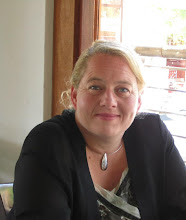A memetic virus gripped the world of popular music in late 1984 and 1985: the superstar benefit single. The phenomenon of superstar benefits can be traced back through George Harrison’s Concert for Bangladesh in 1971 and The Secret Policeman’s Balls organized by Amnesty International throughout the 1970s. But the epidemic of benefit singles that paralyzed the music scene in 1985 can be traced directly to Bob Geldof and the 1984 Christmas hit “Do They Know It’s Christmas”. (Video here. God help us all.)
In 1984, Geldof’s band The Boomtown Rats was lurching towards irrelevance and dissolution. He was depressed: ““We did the drugs, did the girls… And then we didn’t. In late October 1984, I was sitting at home. Rock stars don’t sit at home - they tour, they record.” Sitting at home, Geldof watched a documentary by Michael Buerk on famine in Ethiopia. Geldof was stunned that in a decade characterized by excess and consumption in the UK, acute famine was killing hundreds of thousands in Ethiopia. Geldof organized friends in the UK and Irish music scene to record a benefit single, donating the proceeds to famine relief.
The song in question includes some of the most patronizing lines ever written about the African continent:
And there won’t be snow in Africa this Christmas time
The greatest gift they’ll get this year is life
(Oooh) Where nothing ever grows
No rain nor rivers flow
Do they know it’s Christmas time at all?
But it was a great commercial success, topping the UK singles charts and raising $14 million and eventually earning Geldof a knighthood. It set the template for future benefit singles: recruit musicians based on their name recognition and fame, give each a single phrase to sing, and rely on their fanbases to purchase the single, the accompanying album and videocassettes. Geldof repeated the Band Aid model with Live Aid and recently, Live 8, a festival to raise “awareness” about Africa which, memorably, included so few Africans that Peter Gabriel felt compelled to hold a companion event called “Africa Calling”. (Geldof explained that he had invited U2, Elton John and Madonna because they’d attract large television audiences, while African artists presumably would not.)
In the wake of the Band Aid success, Michael Jackson organized a similar group called USA for Africa, which recorded “We Are the World” (Video - you’ve been warned.) Willie Nelson, Neil Young and John Mellencamp tried to bring the attention back to the US with a series of Farm Aid concerts. And Steven Van Zandt - Bruce Springstein’s guitar player and television mafioso Silvio Dante - weighed in with “Sun City”.
Van Zandt’s project, called Artists United Against Apartheid, was inspired by his trips to South Africa to research the similarities between Apartheid and Indian reservations in the US. He came away from his South African trips with a special distaste for Sun City, a resort casino created by South African hotelier Sol Kerzner in the bantustan of Boputhatswana, an easy drive from Johannesburg and Pretoria. Gambling was illegal in South Africa, but in the allegedly independent Tswana “homeland”, authorities voted to legalize gambling and pornographic movies, creating the opportunity for Kerzner to create an easily accessible and legal “Las Vegas” for the enjoyment of white South Africans. (Kerzer used a similar strategy to develop the Mohegan Sun casino in Uncasville, Connecticut, making gambling easily accessible to my fellow New Englanders through a partnership with the Mohegan Indian tribe.)Sun City recruited musicians from around the world to perform at the casino. Musicians who accepted the invitation were defying a long-standing cultural boycott of the Apartheid regime. Started in 1961 by the British Musicians Union, the boycott was managed by the UN Center Against Apartheid, which maintained a blacklist of artists who defied the boycott and played at Sun City. The Artists United Against Apartheid project sought to call attention to the boycott and to pressure artists not to accept South African invitations - it wasn’t an attempt to raise funds like many other benefit records, though Danny Schechter, an ABC journalist who helped coordinate the project, reports that funds were given to ANC activst Oliver Tambo to support a school in Tanzania.
This is a great post which goes on to discuss the circumstances and conflict that arose with Paul Simon's recording of the Graceland album. Read the rest of it here.
More Information
Ethan Zuckerman, From protest to collaboration: Paul Simon’s “Graceland” and lessons for xenophiles (2 April 2009) <http://www.ethanzuckerman.com/blog/2009/04/02/from-protest-to-collaboration-paul-simons-graceland-and-lessons-for-xenophiles/> at 5 April 2009


No comments:
Post a Comment